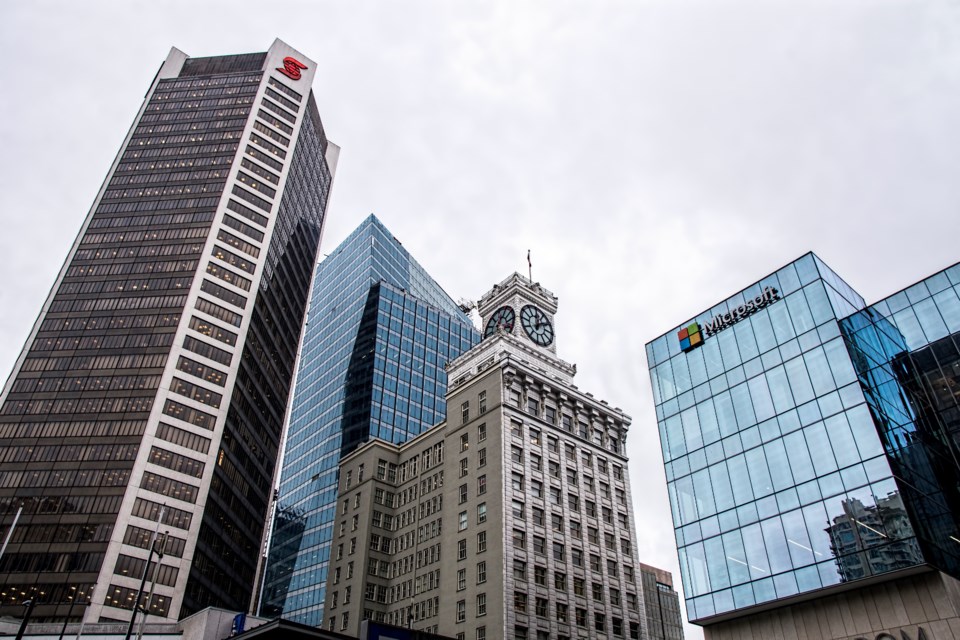San Francisco property owners are concerned about the possible collapse of the California city’s commercial real estate market as 24 million square feet of office space has gone vacant since the COVID-19 pandemic began, according to a recent survey by MyElisting, a Texas-based commercial leasing platform.
In the heart of Manhattan in New York City, blocks of office buildings stand virtually vacant and staring into an uncertain future: too old to attract fickle tenants, too new to be demolished and too expensive to be left empty, the report found
MyElisting said it relates to the reluctance of workers to return to the office – and adds that the situation could worsen as office leases signed prior to the pandemic come due and tenants refuse to renew.
U.S. cities with near record-high office vacancy rates include Houston at 18.8 per cent, Dallas/Fort Worth at 17.5 per cent, and Washington D.C., Chicago and San Francisco, which were all above 15 per cent in Q3 2022.
San Francisco saw its office vacancy rate increase from 6.28 per cent in Q1 2020 to 15.45 per cent in Q3 2022. Some of the city’s office tower owners have attempted to bail out without success. Wells Fargo purchased a 14-storey office building on California Street in downtown San Francisco 17 years ago, paying $324 per square foot.
“After putting the building on the market earlier in 2022, bids came in at 60 per cent to 70 per cent under what the building would have sold for in 2019,” said Nate Barber, a digital specialist with MyElistings. Wells Fargo has since taken it off the market.
“Some commercial buildings purchased at peak market prices are now abandoned, with few prospects for a profitable future,” he added.
“These have been nicknamed zombie buildings,” said Barber, whose company handles leasing on more than 120,000 U.S. commercial properties.
A 2022 study by professors at Columbia University and New York University estimated that lower tenant demand because of remote work may cut 28 per cent, or $456 billion, off the value of offices across the U.S. About 10 per cent of that would be in New York City, where the Manhattan vacancy rate is now 22.5 per cent, up 160 basis points from Q3 2022.
Vancouver
While some analysts say higher office vacancies due to remote and hybrid workers is a global phenomenon, Vancouver has apparently dodged the zombie invasion.
So far, at least.
“Our office is completely full,” said Paul Sullivan, a property tax expert and appraiser at Ryan ULC, which has a full-floor office on West Pender Street, Vancouver, with a 40-person staff.
Despite the expansion of hybrid and remote work, Thomas Davidoff, a professor at the University of B.C’s Sauder School of Business, said “Vancouver is not seeing the panic of San Francisco.”
Sullivan believes that Vancouver’s downtown offices will continue to retain and attract tenants, but there are signs that headwinds are building, according to a Q3 2022 report from NAI Commercial.
In the second quarter this year, downtown Vancouver office absorption went negative by 360,910 square feet, NAI found. As of Q3, the vacancy rate increased to 11.5 per cent, up from 9.5 per cent a year earlier and from 11.2 per cent in the second quarter 2022.
This translates into more than three million square feet of vacant office space downtown.
Newer A-Class office towers are performing the best, with the vacancy rate dropping to 10.5 per cent, down from 11.3 per cent in the second quarter.
In comparison, the B Class vacancy rate increased to 12.4 per cent and Class C space has shot up to 14.6 per cent, according to NAI.
“We can conclude that non-view space, or poorly improved space has become much harder to lease, with greater competition,” NAI cautioned.
Meanwhile, an increase in downtown subleases means that more leased space is being shoved back onto the market, now accounting for more than a quarter (26.3 per cent) of the vacant office space in the core.
“Many firms have decided it has been too long and [they have] adapted well to remote working and now it is time to try and recover on their redundant premises,” the NAI report concluded.
But Rob DesBrisay, managing partner, leasing and investment sales at NAI Commercial, said Vancouver has advantages that will keep zombie tower fears at bay,
“Vancouver is still a favourable city to live in, and our talent pool and low 70-cent dollar makes it an attractive city for larger firms to have a presence. I don't think we will see the vacancy hit San Francisco levels. You will see tenants starting to have more options and move up in building class. The good news is Vancouver landlords tend to be nimble,” DesBrisay said.



